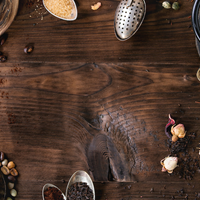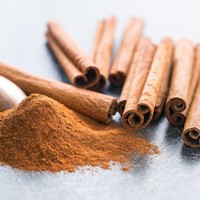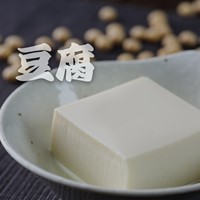Mastering Types of Sugar in Japan: A Complete Ingredient Guide

This page contains affiliate links.
Cooking in Japan can be challenging, especially when buying ingredients due to language barriers and different available options. While some foods may be the same as in your home country, they may go under different names or have other varieties available. Finding sugar substitutes or alternatives for common ingredients, such as sugar, can be even more challenging. This guide aims to help you navigate the different sugar varieties you may need for various recipes and provides some substitute options.
>> Types of Salt in Japan: Natural, Refined & How to Choose
Types of Sugar

- White Sugar – Refined white sugar, made up of fine crystals, is the most widely used type of sugar.
- Granulated Sugar – Granulated sugar has larger crystals than white sugar, so it is better suited to use in coffees/teas and sweets.
- White Coarse Sugar – White coarse sugar is known for its larger crystals, making it a popular choice for confectionery and sweet treats. It's considered a purer form of sugar compared to other options.
- Soft Brown Sugar – In Japan, soft brown sugar is the most popular brown sugar used in cooking. It has fine crystals and is often combined with miso in various dishes.
- Medium Coarse Sugar – Medium coarse sugar is a light caramel sugar with more coarse crystals.
- Sugar Cubes – Sugar cubes combine molasses and granulated sugar to create uniform cubes of a fixed size. This makes them ideal for use in drinks where precise measurements are essential.
- Rock Sugar – Rock sugar is a form of sugar that comes in large crystalline pieces that dissolve slowly in liquid. You can also enjoy these pieces as candy.
- Liquid Sugar – Using liquid sugar is a practical solution for liquid-based products like drinks, sauces, and syrups to prevent the grittiness of using granulated sugar.
- Wasanbon – Have you heard of Wasanbon? It's a type of sugar that is uniquely Japanese and has a yellow-brown color. You can often find it in traditional Japanese sweets because of its distinct flavor.

- Kokutou or Kurozato (Brown Sugar) – Kurozato is a form of "Japanese brown sugar" made from unprocessed, unrefined cane sugars extracted using traditional methods. You can find it as an ingredient in some Japanese sweets and snacks.
Sugar & Artificial Sweeteners That Are Good for You

Many products nowadays claim to have low or zero sugar content. Still, they often use artificial sweeteners to compensate for the lack of flavor caused by the removal of sugar. While this can benefit individuals trying to reduce their sugar intake, it's important to note the health impact of different sweeteners. Some artificial sweeteners can be harmful, while others are considered more acceptable. It's crucial to be aware of the types of sweeteners used in the products you consume to make informed decisions about what you put into your body.
Plant-based sweeteners, such as erythritol, are most acceptable when buying products with artificial sweeteners. These sweeteners are made by fermenting the glucose from natural sugars in fruits. It doesn't affect blood sugar levels or have any carcinogenic effects, making it unique among the many dangerous artificial sweeteners. However, it is important to check products as some manufacturers mix sweeteners like erythritol with the more harmful sweeteners.
Artificial Sweeteners to Avoid
It is advisable to avoid certain artificial sweeteners, such as aspartame, acesulfame potassium, and sucralose. Certain artificial sweeteners, such as aspartame, acesulfame potassium and sucralose, are still under discussion and may be best avoided if you are concerned about your health. Sucralose has been seen to be the least harmful of these three but can still cause problems with blood sugar levels.
Sugar Substitutes
If you want to reduce your sugar intake but still desire sweet flavors in your food, consider using natural sugar substitutes from Japan. These substitutes are a healthy alternative to artificial sweeteners.
What is Tensaitou?

Tensaito is a unique sugar made from the Japanese sugar beet (てん菜) rather than the sugar cane used for most sugars. Tensaito is an unrefined brown sugar that retains natural nutrients throughout production. Some nutrients, such as potassium, calcium, and phosphorous, can be beneficial as the body doesn't naturally produce them. Tensaito also contains natural oligosaccharides and has a low GI value. The GI value makes it ideal for those looking for a natural sugar substitute that provides health value. Tensaito can be used similarly to white sugar in cooking, sweets, and coffees/teas. Click the image below to purchase on Amazon.
What is Lakanto?
Lakanto is a natural sweetener from Japan that is derived from corn-based erythritol and wild monk fruit extract. Lakanto is a helpful product for those looking for a sugar substitute as it contains no calories and doesn't affect the GI value of the food. High temperatures don't affect the sweetness, making it great for cooking. Lakanto is a versatile sweetener that comes in both syrup and granulated form, offering a wider range of options for cooking and baking. Lakanto is generally used similarly to white sugar, and most consumers note that the sweetness is the same as white sugar. Click the image below to purchase on Amazon.
Sweet Choices: Understanding Japanese Sugars and Alternatives
Understanding the different types of sugar can be confusing, especially with the wide variety of artificial sweeteners and natural substitutes available. To simplify things, we've put together a guide to the standard sugar types in Japan and the various sugar substitutes to choose from. When it comes to health, natural sweeteners are generally better, but if you need an artificial option, a plant-based sweetener like erythritol is the best choice. We hope this guide helps you make informed decisions about the sugars you use.
If you would like more content on Japanese and ingredients, check out our blog's Health & Food section!

















